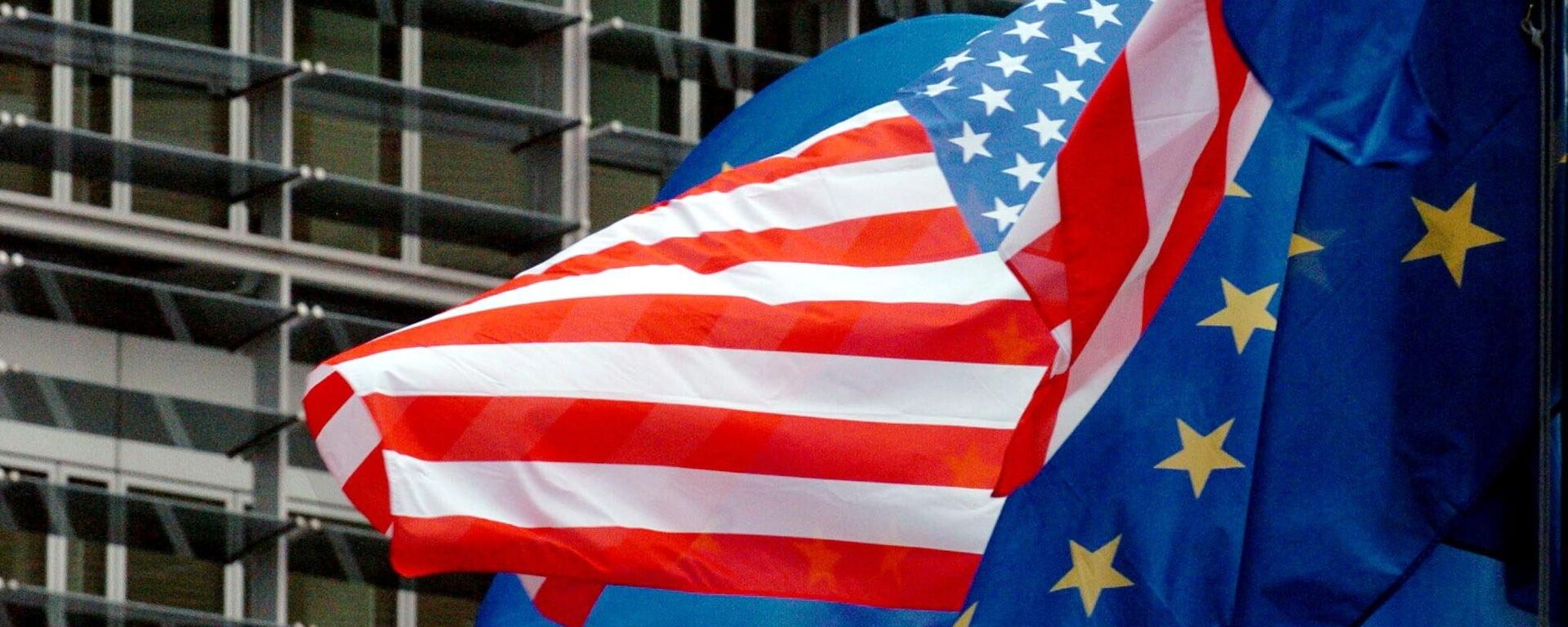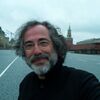https://sputnikglobe.com/20240625/pepe-escobar-brics-cities-unite-in-kazan-ushering-in-new-era-of-cooperation-1119119664.html
Pepe Escobar: BRICS+ Cities Unite in Kazan, Ushering in New Era of Cooperation
Pepe Escobar: BRICS+ Cities Unite in Kazan, Ushering in New Era of Cooperation
Sputnik International
The idea, by Kazan mayor Ilsur Metshin, was as simple as quite revolutionary. Why not profit from the year of the Russian presidency of BRICS – with the first BRICS + summit taking place in Kazan next October – to come up with a new association uniting BRICS+ cities?
2024-06-25T14:10+0000
2024-06-25T14:10+0000
2024-06-25T14:10+0000
russia
ilsur metshin
vladimir putin
kazan
china
russia
brics
kremlin
volga
saint petersburg
https://cdn1.img.sputnikglobe.com/img/07e8/06/19/1119124841_476:275:3190:1802_1920x0_80_0_0_6a258137408d6dbdbe34999f6a2684cf.jpg
Mayor Metshin is a big fan of the “development oh horizontal links between cities.” Kazan’s experience in inter-municipal cooperation already spans over a quarter of a century, with places all over the world, and agreements on twinning relations struck with 71 cities.The objective of the new association is to advance closer cooperation on several fields – from economy, culture and education to ecology, waste management and tourism. Like a giant city-to-city running dialogue – based crucially, to quote comrade Xi Jinping, on “peoples to peoples’ exchanges”.Cue to this past long weekend in Kazan, when over 100 mayors, deputy mayors, heads of municipal associations and local government officials came to the magnificent Kazan City Hall for the first BRICS+ Association of Cities and Municipalities forum.President Putin sent a special message to the opening ceremony, chaired by mayor Metshin, and featuring, among others, the mayor of Ankara, Mansur Yavash, and Yang Dong, Vice-President of the Chinese People’s Association for Friendship with Foreign Countries.BRICS members China, Iran, India, Brazil and South Africa sent the largest delegations to Kazan – ranging from small cities among the Brazilians to important Iranian cities like Isfahan and Mashhad to a powerhouse like Harbin in China, the gateway to trading with the Russian Far East.The Argentina delegation – whose new President, Javier “Chainsaw” Milei, declined to be part of BRICS – included a true dissident, Juan Javier Willipan, the mayor of Moreno. The post-Soviet space was fully represented by Kazakhstan, Uzbekistan, Tajikistan, Belarus and Azerbaijan.It was fascinating to watch interconnected interests voiced out of multiple latitudes, from the young vice-mayor of Tehran, Hamidreza Natanzi, to ultra-energetic Bernadia Tjandradevi, a native of Yogyakarta, Indonesia’s cultural capital and secretary-general of the Asia-Pacific Chapter of the United Cities and Local Governments.Cruisin’ the VolgaIt was more than fitting that the first step of a new, dynamic multilateral organization, with immense growth potential, should take place in Kazan, capital of Tatarstan, Russia’s window to the lands of Islam and 2024 BRICS+ capital.The rich history of the city founded in the late 13th century by Mongols/Tatars of the Golden Horde after they got rid of the Bulgar kingdom on the middle Volga spans everything from capital of an independent khanate, major trading center, and the capture in 1552 by Ivan IV (“The Terrible”) with the old Tatar fortress rebuilt as a Kremlin, to hosting Tolstoy and Lenin as students.So it was also fitting that the ultra-gracious, impeccably organized Kazan hosts would take the multinational BRICS+ crowd to a cruise in the Volga - the historic cradle of the Russian state.Along the way, I shared a table with Mikhail Solomentsev, an immensely cultured diplomat, African specialist and today the permanent representative of the Republic of Crimea to President Putin. Our deep dive on all things Crimea – and beyond – was a day before the US-guided ATACMS attack on Sevastopol.Our destination was the island town of Sviyazhsk, surrounded by rivers on all sides; the Pike, the Sviyaga and the Volga. The original settlement was founded in 1551 by Ivan IV as a fortress supporting Russian troops to advance and capture Kazan from the Golden Horde.Sviyazhsk is immensely precious – starting with the Archeological Timber Museum, where the original village, preserved in mud, is now being restored, and all that coupled with a 21 meter-long mural of life in the village as it was, recreated by AI.The Assumption cathedral is enriched by fabulous 16thcentury frescoes, including a ‘Saint Christopher with a Horse’s Head’ – literally, which would have been off-limits in a Rome basilica.The icing on the Tatar cake was the Sabantuy – a mix of Tatar folk holiday experience and agricultural fair: a sensorial psychedelic experience – complete with the re-enactment of a Tatar epic, the Tale of Azamat, which centers on a horseback hero who cultivates the land and wins the daughter of a village head in a competition.Sabantuy in fact encapsulates classic Tatar values: land, family, hospitality, traditional customs – all watched from above by Tengri, the sky god. It’s all about harmony – something that was instantly figured out by the BRICS+ crowd, and featured prominently when Putin, at the St. Petersburg forum, stressed the emergence of a multipolar, “harmonic” world.Now it’s up to BRICS+ cities, dozens, soon hundreds, and then thousands, to crosstalk and harmonize their development and problem-solving strategies.
https://sputnikglobe.com/20240621/russias-kazan-hosts-brics-cities-forum-1119042143.html
https://sputnikglobe.com/20240118/how-the-west-was-defeated-1116245840.html
kazan
china
russia
saint petersburg
iran
brazil
south africa
crimea
Sputnik International
feedback@sputniknews.com
+74956456601
MIA „Rossiya Segodnya“
2024
Pepe Escobar
https://cdn1.img.sputnikglobe.com/img/101642/49/1016424943_868:0:3100:2232_100x100_80_0_0_a742038b05a1847ce42e71952e4994d5.jpg
Pepe Escobar
https://cdn1.img.sputnikglobe.com/img/101642/49/1016424943_868:0:3100:2232_100x100_80_0_0_a742038b05a1847ce42e71952e4994d5.jpg
News
en_EN
Sputnik International
feedback@sputniknews.com
+74956456601
MIA „Rossiya Segodnya“
Sputnik International
feedback@sputniknews.com
+74956456601
MIA „Rossiya Segodnya“
Pepe Escobar
https://cdn1.img.sputnikglobe.com/img/101642/49/1016424943_868:0:3100:2232_100x100_80_0_0_a742038b05a1847ce42e71952e4994d5.jpg
brics+ forum, brics summit, brics forum in kazan, brics enlargement, brics expansion, ethiopia joins brics, ethiopia in bricks, ethiopia becomes brics member, what countries are in brics, new brics members, what's brics, what does brics do, brics currency, brics payment system
brics+ forum, brics summit, brics forum in kazan, brics enlargement, brics expansion, ethiopia joins brics, ethiopia in bricks, ethiopia becomes brics member, what countries are in brics, new brics members, what's brics, what does brics do, brics currency, brics payment system
Pepe Escobar: BRICS+ Cities Unite in Kazan, Ushering in New Era of Cooperation
The idea, by Kazan mayor Ilsur Metshin, was as simple as quite revolutionary. Why not profit from the year of the Russian presidency of BRICS – with the first BRICS + summit taking place in Kazan next October – to come up with a new association uniting BRICS+ cities?
Mayor Metshin is a big fan of the “
development oh horizontal links between cities.”
Kazan’s experience in inter-municipal cooperation already spans over a quarter of a century, with places all over the world, and agreements on twinning relations struck with 71 cities.
The objective of the new association is to advance closer cooperation on several fields – from economy, culture and education to ecology, waste management and tourism. Like a giant city-to-city running dialogue – based crucially, to quote comrade Xi Jinping, on “peoples to peoples’ exchanges”.
Cue to this past long weekend in Kazan, when over 100 mayors, deputy mayors, heads of municipal associations and local government officials came to the magnificent Kazan City Hall for the first BRICS+ Association of Cities and Municipalities forum.
President Putin sent a
special message to the opening ceremony, chaired by mayor Metshin, and featuring, among others, the mayor of Ankara, Mansur Yavash, and Yang Dong, Vice-President of the Chinese People’s Association for Friendship with Foreign Countries.
BRICS members China,
Iran,
India,
Brazil and
South Africa sent the largest delegations to Kazan – ranging from small cities among the Brazilians to important Iranian cities like Isfahan and Mashhad to a powerhouse like Harbin in China, the gateway to trading with the Russian Far East.
The Argentina delegation – whose
new President, Javier “Chainsaw” Milei, declined to be part of BRICS – included a true dissident, Juan Javier Willipan, the mayor of Moreno. The post-Soviet space was fully represented by Kazakhstan, Uzbekistan, Tajikistan, Belarus and Azerbaijan.
It was fascinating to watch
interconnected interests voiced out of multiple latitudes, from the young vice-mayor of Tehran, Hamidreza Natanzi, to ultra-energetic Bernadia Tjandradevi, a native of Yogyakarta, Indonesia’s cultural capital and secretary-general of the Asia-Pacific Chapter of the United Cities and Local Governments.
It was more than fitting that the first step of a new, dynamic multilateral organization, with immense growth potential, should take place in Kazan,
capital of Tatarstan, Russia’s window to the lands of Islam and 2024 BRICS+ capital.
The rich history of the city founded in the late 13th century by Mongols/Tatars of the Golden Horde after they got rid of the Bulgar kingdom on the middle Volga spans everything from capital of an independent khanate, major trading center, and the capture in 1552 by Ivan IV (“The Terrible”) with the old Tatar fortress rebuilt as a Kremlin, to hosting Tolstoy and Lenin as students.
So it was also fitting that the ultra-gracious, impeccably organized Kazan hosts would take the multinational BRICS+ crowd to a cruise in the Volga - the historic cradle of the Russian state.
Along the way, I shared a table with Mikhail Solomentsev, an immensely cultured diplomat, African specialist and today the permanent representative of the
Republic of Crimea to President Putin. Our deep dive on all things Crimea – and beyond – was a day before the US-guided
ATACMS attack on Sevastopol.
Our destination was the island town of Sviyazhsk, surrounded by rivers on all sides; the Pike, the Sviyaga and the Volga. The original settlement was founded in 1551 by Ivan IV as a fortress supporting Russian troops to advance and capture Kazan from the Golden Horde.
Sviyazhsk is immensely precious – starting with the Archeological Timber Museum, where the original village, preserved in mud, is now being restored, and all that coupled with a 21 meter-long mural of life in the village as it was, recreated by AI.
The Assumption cathedral is enriched by fabulous 16thcentury frescoes, including a ‘Saint Christopher with a Horse’s Head’ – literally, which would have been off-limits in a Rome basilica.

18 January 2024, 09:35 GMT
The icing on the Tatar cake was the Sabantuy – a mix of Tatar folk holiday experience and agricultural fair: a sensorial psychedelic experience – complete with the re-enactment of a Tatar epic, the Tale of Azamat, which centers on a horseback hero who cultivates the land and wins the daughter of a village head in a competition.
Sabantuy in fact encapsulates classic Tatar values: land, family, hospitality, traditional customs – all watched from above by Tengri, the sky god. It’s all about harmony – something that was instantly figured out by the BRICS+ crowd, and featured prominently when Putin, at the St. Petersburg forum, stressed the emergence of a multipolar, “harmonic” world.
Now it’s up to BRICS+ cities, dozens, soon hundreds, and then thousands, to crosstalk and harmonize their development and
problem-solving strategies.





